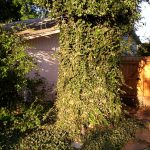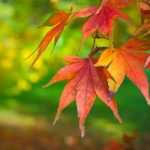Please, Don’t Top Your Trees!
What is topping?
Topping occurs when a mature tree’s largest branches are drastically trimmed or cut back, leaving stubs. Topping of street trees is not allowed by any City in our area.
8 Reasons Why Trees Should Not Be Topped:
1. Weak new limbs.
New limbs usually grow from a larger branch, adding layers of wood that overlap over time. They gradually enlarge along with the parent stem. After a tree is topped, the sprouts that shoot from the stub are weakly attached because they form from that point only rather than as an extension of the entire branch.
2. Rapid new upper canopy growth.
People often top their trees to reduce their height and width. To their dismay, the opposite usually occurs. A tree will react to this type of trauma by producing lots of long sprouts and rapidly regaining its size.
3. Ugliness.
The act of topping dramatically disfigures a tree. Even if small limbs sprout from the stubs, the tree will have a bushy appearance. It will never have the strong, graceful presence it once had, and the community will be robbed of its beauty. A topped tree is a disfigured tree. Even with regrowth, it never regains the grace and beauty of its species. This is particularly acute in deciduous trees such as Hawthorne and Plums which line many of our area streets.
4. Tree death.
Some tree species are especially intolerant to topping. Beech trees, for instance, don’t generally sprout after extreme pruning. As a result, the lack of foliage severely impairs the tree’s ability to capture sunlight and turn it into food, which will probably lead to the death of the tree.
5. Cost.
Topping trees may be the faster solution, and in some situations cost less upfront than if you were to hire a professional to prune them, but the overall costs can be seen in:
- More frequent and additional pruning costs in the future
- Increased risk of weakened and hazardous branches
- Removal and replanting costs if the tree dies
- Lowered property value
- Loss of other plantings shocked by sunlight
6. Insects and disease.
Tree topping results in large wounds that very rarely close well. The raw stubs invite insect and the spread of fungi and decay. The size of the cuts and the proximity to the tree’s heartwood prevent the tree from properly defending itself.
Many of the large fir trees in our area topped in the 60’s, 70’s and 80’s are now coming apart and needing removal for safety reasons.
7. Shock.
The leaves and branches of a mature tree’s crown makes shade for its bark, as well as your surrounding plantings. If you were to top your trees in the Spring, the full summer sun would scald the bark and shock what is usually shaded. Poor tree health and even death has been known to occur on account of this.
8. Starvation.
A tree’s leaves are it’s food source. Starches manufactured in the leaves during photosynthesis are transported to the roots and the roots transport water to the leaves. When you top a tree and remove all of its leafy crown, the tree is likely to starve. Proper pruning rarely removes more than a third of the trees leaves.
Alternatives to Topping
Keep your trees healthy and beautiful by lightly pruning them once every three years. As a general rule, never prune more than 25% of the tree’s crown at one time. The International Society of Arboriculture has the keys to proper pruning here.
When you plant a new tree, keep the species’ mature height in mind. If there are power lines nearby, choose a tree that won’t grow large enough to reach them.For all you do-it-yourself pruners out there, when dealing a tree larger than 20 feet tall, it’s safer for you and the tree to hire a Certified Arborist.
We are happy to tackle and pruning project you’ve got. Call us with your pruning questions and get a free estimate!



